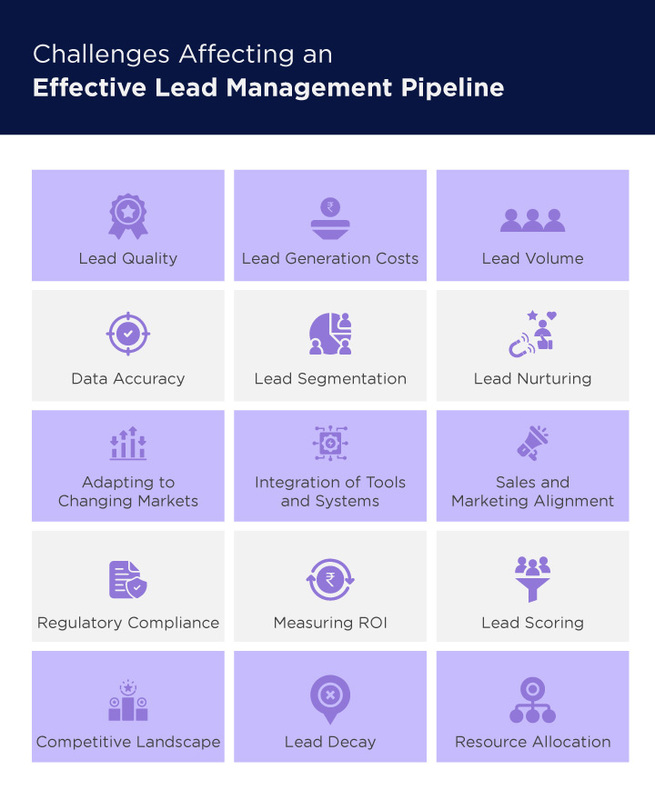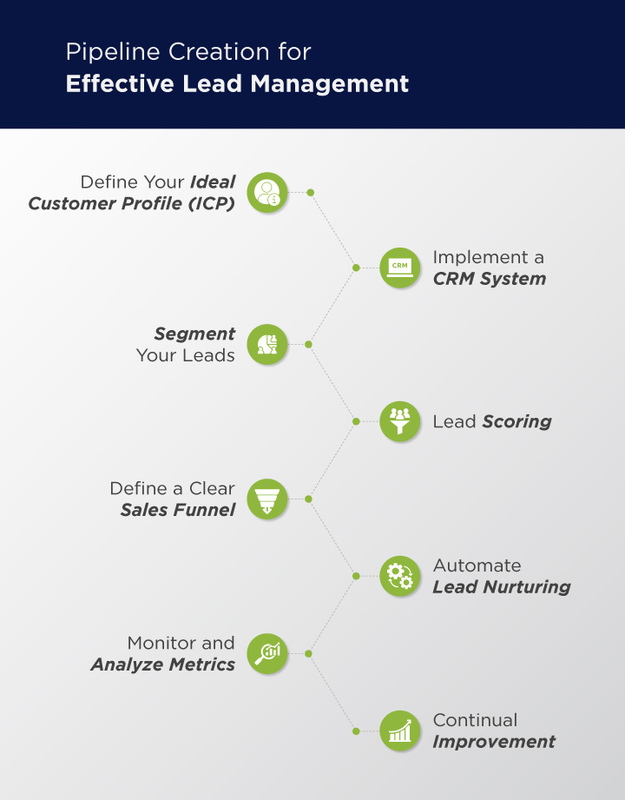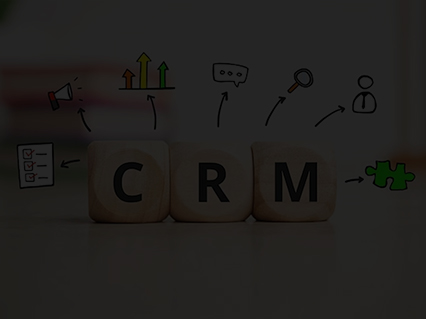What is Lead Management
Lead management is one of the most important aspects of any successful business, particularly in growth marketing. It involves acquiring, tracking, nurturing, and converting potential customers (leads) into paying clients. Effective lead management not only streamlines the sales process but also enhances customer relationships, resulting in improved revenue and growth for your business.
In today's competitive business landscape, where customers have abundant choices, it's crucial to have a well-structured lead management system in place. This system ensures you don't miss out on valuable opportunities and can efficiently convert leads into loyal customers. To achieve this, creating an efficient lead pipeline is essential.
In this blog, we will delve into the challenges affecting lead management and the many strategies to consider in pipeline creation for effective lead management.
Challenges Affecting an Effective Lead Management Pipeline



Here are some common challenges you may encounter when building a lead management pipeline:
-
Lead Quality: Ensuring the quality of incoming leads can be challenging. You might receive leads that are not a good fit for your product or service, wasting time and resources.
Lead Generation Costs: Generating leads can be expensive, especially if you're using paid advertising or lead generation services. Balancing the cost of acquisition with the potential return on investment is essential.
Lead Volume: Managing a high volume of leads can be overwhelming, leading to inefficiencies in the pipeline. It's essential to have the capacity to handle leads effectively.
Data Accuracy: Maintaining accurate and up-to-date lead data is a constant challenge. Outdated or incorrect information can lead to wasted efforts and missed opportunities.
Lead Segmentation: Properly segmenting leads based on their characteristics and behaviours is crucial for targeted marketing. However, it can take time to define and implement effective segmentation strategies.
Lead Nurturing: Nurturing leads through the sales funnel requires a tailored approach. Finding the right content and timing for each lead can be complex, especially in larger pipelines.
Lead Scoring: Developing an effective lead scoring system that accurately predicts a lead's readiness to convert can be challenging. Over-scoring or under-scoring leads can lead to missed opportunities.
Integration of Tools and Systems: Many businesses use multiple tools and systems (CRM, marketing automation, analytics, etc.) to manage leads. Integrating these tools seamlessly to ensure data flows smoothly requires technical fluency.
Sales and Marketing Alignment: Aligning the efforts of sales and marketing teams can be difficult. Ensuring that leads are handed off at the right time and with the right information is essential for conversion.
Regulatory Compliance: Depending on your location and industry, you may need to navigate various data privacy and marketing regulations. Failure to comply can result in legal issues and fines.
Measuring ROI: Determining the return on investment from your lead management pipeline can be complex. Understanding which leads contributed to revenue and at what cost is essential for optimising your pipeline.
Adapting to Changing Markets: Market dynamics, customer preferences, and technologies evolve. Adapting your lead management pipeline to these changes requires flexibility and constant monitoring.
Competitive Landscape: Your competitors are also vying for the same leads. Staying ahead of the competition and differentiating your approach can be challenging.
Lead Decay: Leads can go cold over time if not properly nurtured. Keeping leads engaged and interested can be a struggle, particularly for longer sales cycles.
Resource Allocation: Allocating the right resources (time, personnel, budget) to different stages of the lead management pipeline can be tricky. Balancing lead acquisition with lead nurturing is essential.
Pipeline Creation for Effective Lead Management

1. Define Your Ideal Customer Profile (ICP)
Before you can effectively manage leads, it's essential to understand who your ideal customers are. Create a detailed ICP that outlines the characteristics, needs, and pain points of your target audience. This knowledge will help you attract leads more likely to convert into customers, saving time and resources.
2. Implement a CRM System
A Customer Relationship Management (CRM) system is the backbone of lead management. It helps you organise, track, and manage your leads efficiently. Consider investing in a robust CRM lead management system to streamline your processes and gain insights into customer behaviour.
3. Segment Your Leads
Not all leads are created equal. Segment your leads based on demographics, behaviour, and engagement level. This segmentation allows you to tailor your marketing efforts and communication to each group, increasing the likelihood of conversion.
4. Lead Scoring
Assign a score to each lead based on their likelihood to convert. Their behaviour can determine this score, interaction with your content, and demographic information. Lead scoring helps prioritise high-potential leads, ensuring your sales team focuses their efforts on prospects most likely to convert.
5. Define a Clear Sales Funnel
Create a well-defined sales funnel that outlines the stages a lead goes through before becoming a customer. This could include stages like awareness, consideration, and decision. Knowing where each lead is in the funnel allows you to provide them with the right information and nurturing at the right time.
6. Automate Lead Nurturing
Utilise automation tools within your CRM to nurture leads with relevant content and messages. Automated email campaigns, for example, can keep leads engaged and informed throughout their journey, moving them closer to conversion.
7. Monitor and Analyze Metrics
Regularly monitor key performance indicators (KPIs) related to your lead management process. Metrics like conversion rates, lead acquisition costs, and lead-to-customer ratio can provide insights into the effectiveness of your lead pipeline.
8. Continual Improvement
Lead management is an evolving process. Continually assess and refine your lead management system based on the data and insights you gather. This adaptability ensures your pipeline remains effective in the ever-changing business landscape.
Conclusion
In growth marketing, effective lead management is paramount for success. A well-structured lead pipeline, supported by a robust CRM system and thoughtful strategies, can significantly enhance your chances of converting leads into loyal customers. Remember that lead management is not a one-time task but an ongoing process.
Implementing a lead management pipeline can be a monumental task for any business due to its immense complexity. At Amura Marketing Technologies, as a leading growth marketing agency, we have helped businesses implement and maintain an effective lead management pipeline from lead generation to conversion. With over 15 years of experience in the industry, Amura has assisted clients like Glenmark, URIHK, iVOOMi, SEION, Cummins and many more with their lead management systems and helped them grow their business significantly.







